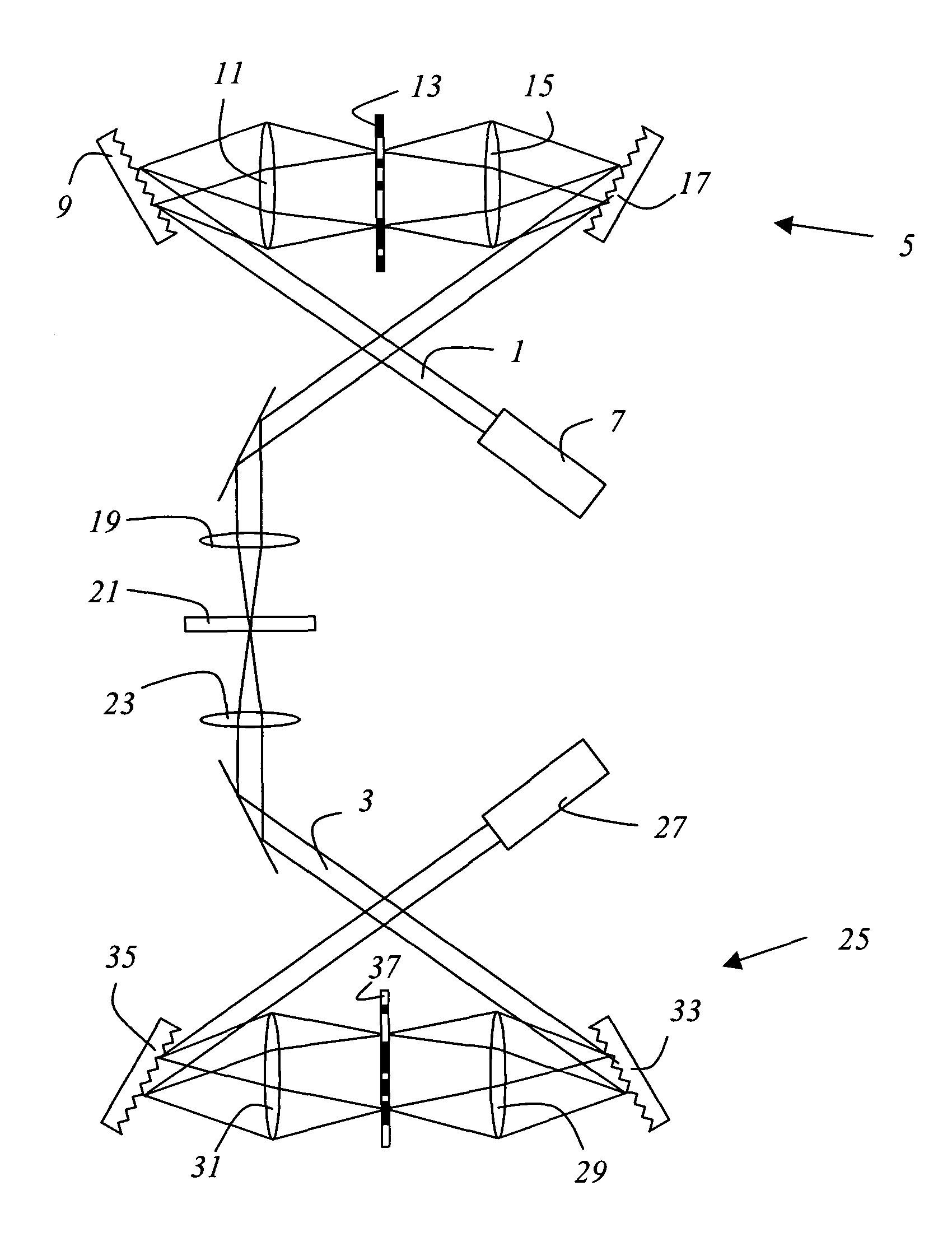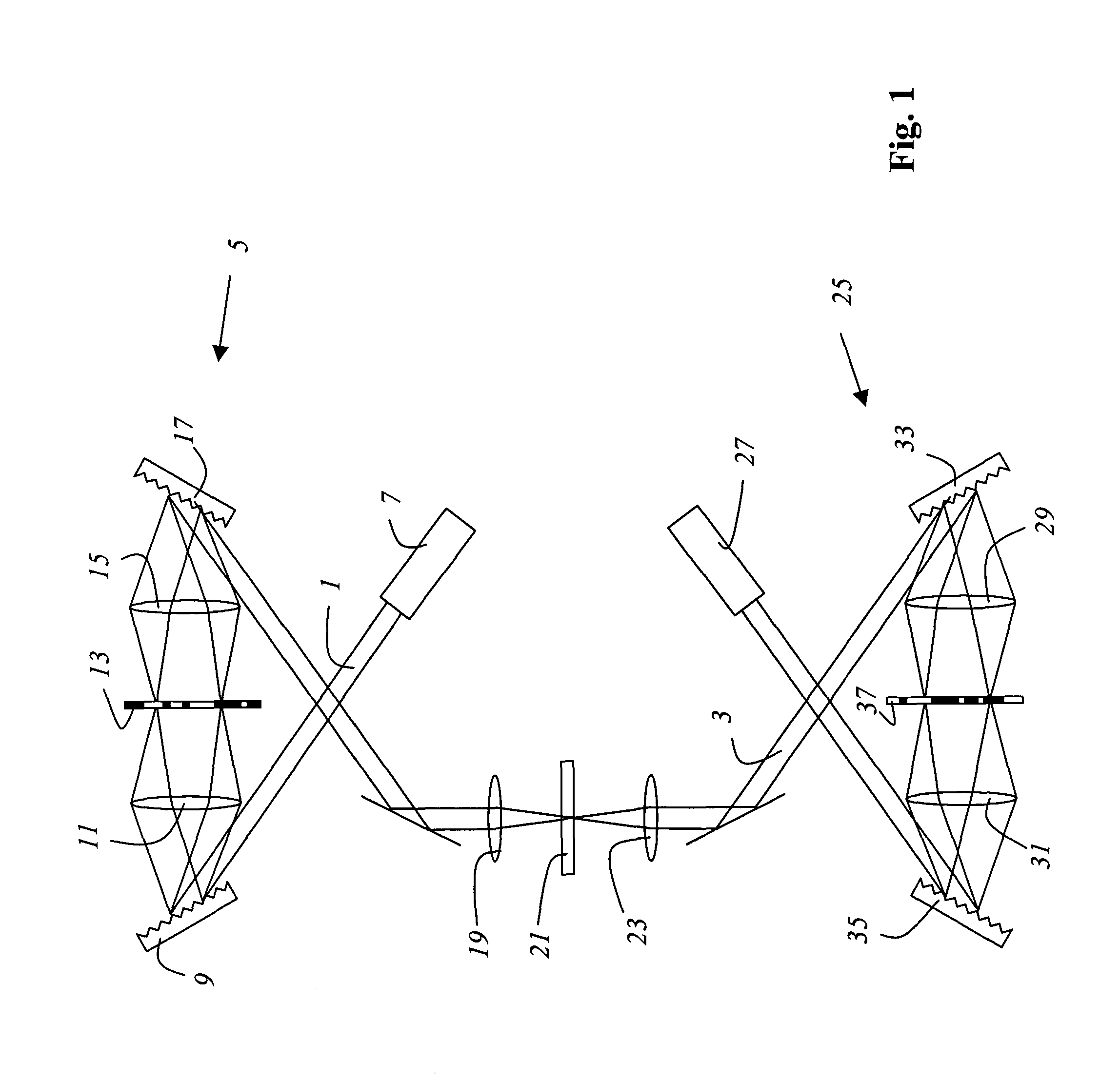Method for microscopy, and microscope
a microscopy and microscope technology, applied in the field of microscopy, can solve the problems of unsatisfactory specimen damage and large demands on the light sour
- Summary
- Abstract
- Description
- Claims
- Application Information
AI Technical Summary
Benefits of technology
Problems solved by technology
Method used
Image
Examples
Embodiment Construction
[0037]FIG. 1 schematically shows a microscope according to the present invention that is embodied as a scanning microscope. The optical components for guiding, directing, and focusing illuminating light beam 1 (generated by a pulsed laser 7) and detection light beam 3, and the apparatuses for evaluating the detection light data and displaying an image of the specimen, are not shown in the interest of better clarity. These components are sufficiently familiar to one skilled in the art.
[0038]The microscope contains a spectral filter 5 that removes from illuminating light beam 1 the light components of the illuminating light that comprise wavelengths within the detection spectral region. For that purpose, the light is spatially spectrally split using a first grating 9, and then focused with first lens 11 onto a mask 13 which removes the spectral components that lie within the detection spectral region. Grating 9 and first mask 13 are located in the focal planes of lens 11 in a 4f arran...
PUM
 Login to View More
Login to View More Abstract
Description
Claims
Application Information
 Login to View More
Login to View More - R&D
- Intellectual Property
- Life Sciences
- Materials
- Tech Scout
- Unparalleled Data Quality
- Higher Quality Content
- 60% Fewer Hallucinations
Browse by: Latest US Patents, China's latest patents, Technical Efficacy Thesaurus, Application Domain, Technology Topic, Popular Technical Reports.
© 2025 PatSnap. All rights reserved.Legal|Privacy policy|Modern Slavery Act Transparency Statement|Sitemap|About US| Contact US: help@patsnap.com



